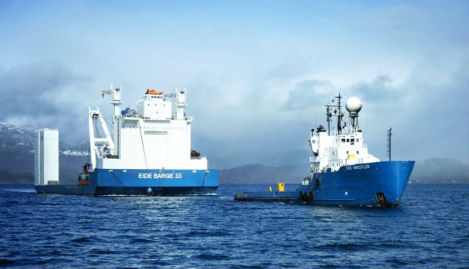BP chairman Carl-Henric Svanberg, who has largely kept a low profile over the Gulf of Mexico oil spill, is now in the limelight, having been summoned to Downing Street and the White House.
Described in the Financial Times newspaper on Saturday as the “hitherto invisible chairman”, Svanberg had a telephone conversation with British Prime Minister David Cameron and went to see finance minister George Osborne in Downing Street on Friday.
The day before, he had been invited by the US authorities to see President Barack Obama on Wednesday.
The Swede, 58, could scarcely have imagined such as scenario when he took up the BP chairmanship one year ago.
Having spent 16 years working in the security lock industry, Svanberg took over as chief executive of telecoms firm Ericsson in 2003 and helped turn it into a global giant in the field.
The ice hockey fanatic’s efforts led him to be dubbed the “Swedish Richard Branson”, after the Virgin boss.
Svanberg was appointed in June 2009 and took over from the flamboyant Peter Sutherland on January 1, 2010. His arrival was well received by analysts, with senior trader and commentator Manoj Ladwa of ETX Capital saying it was a smart move for BP.
Svanberg “has a good track record at Ericsson, reviving the fortunes of a struggling giant. He is a safe hand on the tiller as BP navigates some very stormy waters and rebuilds its operational strength,” he said.
His lack of experience in the petroleum sector raised few eyebrows at the time, though his environmental knowledge was flagged up, as he was a member of the Earth Institute of Columbia University in New York.
And at Ericsson, he created a culture of interest in environmental concerns.
He also told The Times newspaper that it was vital for businesses to play a role in protecting the environment, saying: “As citizens of the world I don’t think we can just sit back”.
But since the Deepwater Horizon oil spill disaster began on April 20, Svanberg has been notable by his low profile. The Independent newspaper on Saturday called him “the invisible man”.
Andreas Cervenka, of Sweden’s Svenska Dagbladet newspaper, accused him of “ostrich tactics”.
Svanberg also ruffled feathers at a conference when he said he was expecting “a smoother ride” at BP.
During the last few weeks, he has emerged from the shadows, starting by explaining that BP chief executive Tony Hayward was first in line, saying “to avoid misunderstandings, we must speak with one clear voice”.
He also gave an interview to the Financial Times and took part in an investors’ conference where he expressed his support for Hayward.
But the scale of the Deepwater Horizon disaster — which has gone beyond being simply an environmental issue — has obliged Svanberg to take his turn on the front line.
After his talks with Osborne at Downing Street, Svanberg was initially reluctant to comment but told broadcaster ITN: “I think we have done everything we can to try to fill the well, and we have said we would do everything expected from us in cleaning up the beach, taking care of all the claims and learn from this incident and make deep-sea drilling an even safer place.”



 Please whitelist us to continue reading.
Please whitelist us to continue reading.
Member comments